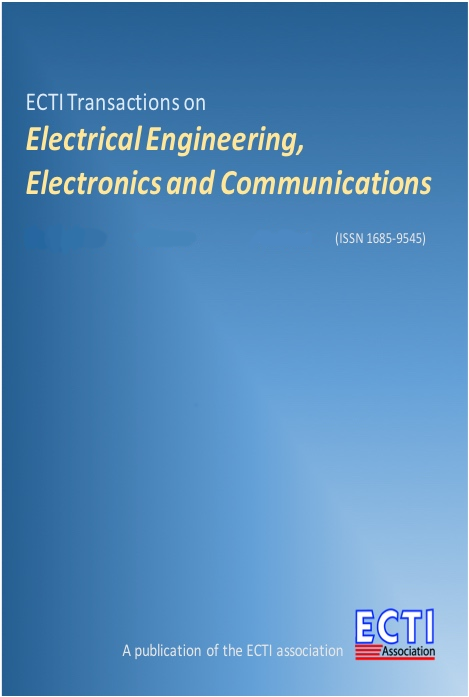EEARP - an Efficient and Energy Aware Routing Protocol for Underwater Wireless Sensor Networks
Main Article Content
Abstract
Recently, Underwater Wireless Sensor Networks (UWSNs) have attracted significant attention from both academia and industry to explore the vast underwater environment. Since UWSNs suffer from long propagation delay, low bandwidth, and high error rate, providing an efficient routing protocol is challenging. This paper proposes EEARP, a series of new routing protocols for underwater networks to improve the performance of existing DBR. The DBR does not consider energy. It only receives data packets from upper depth node and forwards the packets to lower depth nodes. Moreover, this greedy behavior of DBR causes void area problem. EEARP creates a directed acyclic graph rooted at a sink. Each node receives information like depth, energy, and the number of parents from its parents. When forwarding, each node sends a data packet to one or more of its parent nodes. We implemented EEARP in NS2 simulator and evaluated its performance under different scenarios. Results confirm that EEARP outperforms DBR in terms of energy saving, network lifetime, end-to-end delay and packet loss ratio.
Article Details
This journal provides immediate open access to its content on the principle that making research freely available to the public supports a greater global exchange of knowledge.
- Creative Commons Copyright License
The journal allows readers to download and share all published articles as long as they properly cite such articles; however, they cannot change them or use them commercially. This is classified as CC BY-NC-ND for the creative commons license.
- Retention of Copyright and Publishing Rights
The journal allows the authors of the published articles to hold copyrights and publishing rights without restrictions.
References
[2] Jafri, M., Balsamo, S., Marin, A., & Martin, R. “Implementation of depth‐based routing and its enhancement in AquaSim–Next Generation for underwater wireless sensor networks,” International Journal of Communication Systems, e3714 (2018).
[3] Farr, N., Bowen, A., Ware, J., Pontbriand, C., & Tivey, M. “An integrated, underwater optical/acoustic communications system,” In OCEANS 2010 IEEE-Sydney, pp. 1-6 (2010).
[4] Vasilescu, I., Kotay, K., Rus, D., Dunbabin, M., & Corke, P. “Data collection, storage, and retrieval with an underwater sensor network,” In Proceedings of the 3rd international conference on Embedded networked sensor systems, pp. 154-165 (2005).
[5] Cella, U. M., Johnstone, R., & Shuley, N, “Electromagnetic wave wireless communication in shallow water coastal environment: theoretical analysis and experimental results,” In Proceedings of the Fourth ACM International Workshop on UnderWater Networks, p. 9. (2009).
[6] Etter, P. C. Underwater acoustic modeling and simulation (CRC Press, 2018)
[7] Yildiz, H. U., Gungor, V. C., & Tavli, B. “Packet Size Optimization for Lifetime Maximization in Underwater Acoustic Sensor Networks,” IEEE Transactions on Industrial Informatics, (2018).
[8] Keshtgary, M., Mohammadi, R., Mahmoudi, M., & Reza, M. “Energy Consumption Estimation in Cluster based Underwater Wireless Sensor Networks Using M/M/1 Queuing Model,” International Journal of Computer Applications, 43(24), (2012).
[9] Wahid, A., Lee, S., & Kim, D. “A reliable and energy‐efficient routing protocol for underwater wireless sensor networks,” International Journal of Communication Systems, 27(10), 2048-2062 (2014).
[10] Mazinani, S. M., Yousefi, H., & Mirzaie, M. “A Vector-Based Routing Protocol in Underwater Wireless Sensor Networks,” Wireless Personal Communications, 100(4), 1569-1583 (2018).
[11] Xie, P., Cui, J. H., & Lao, L. “VBF: vector-based forwarding protocol for underwater sensor networks,” In International conference on research in networking, Springer, Heidelberg, pp. 1216-1221 (2006).
[12] Nicolaou, N., See, A., Xie, P., Cui, J. H., & Maggiorini, D. ”Improving the robustness of location-based routing for underwater sensor networks,” In Oceans 2007-Europe, pp. 1-6 (2007).
[13] Xu, M., & Liu, G. “A multi-link fault-tolerant routing protocol for three-dimensional underwater acoustic sensor networks,” Computational Information Systems, 9(11), 4345-4352 (2013).
[14] Yan, H., Shi, Z. J., & Cui, J. H. “DBR: depth-based routing for underwater sensor networks. In International conference on research in networking, Springer, Heidelberg, pp. 72-86 (2008).
[15] Mohammadi, R., Javidan, R., & Jalili, A. ” Fuzzy depth based routing protocol for underwater acoustic wireless sensor networks,” Journal of Telecommunication, Electronic and Computer Engineering (JTEC), 7(1), 81-86 (2015).
[16] Wahid, A., & Kim, D. “An energy efficient localization-free routing protocol for underwater wireless sensor networks,” International journal of distributed sensor networks, 8(4), 307246 (2012).
[17] Varughese, A., & Rangarajan, S. V. “Distance based routing scheme for underwater sensor networks,” Int. J. Appl. Inf. Sys, 4, 12-16 (2012).
[18] Ashrafuddin, M., Islam, M. M., & Mamun-or-Rashid, M. “Energy efficient fitness-based routing protocol for underwater sensor network,” International Journal of Intelligent Systems and Applications, 5(6), 61-69 (2013).
[19] Javidan, R., & Rafiee, H. “A New Energy Efficient and Depth based Routing Protocol for Underwater Sensor Networks,” British Journal of Science, 8(1), (2013).
[20] Xie, P., Zhou, Z., Peng, Z., Yan, H., Hu, T., Cui, J. H., ... & Zhou, S. “Aqua-Sim: An NS-2 based simulator for underwater sensor networks,” In OCEANS 2009, MTS/IEEE biloxi-marine technology for our future: global and local challenges, pp. 1-7 (2009).


